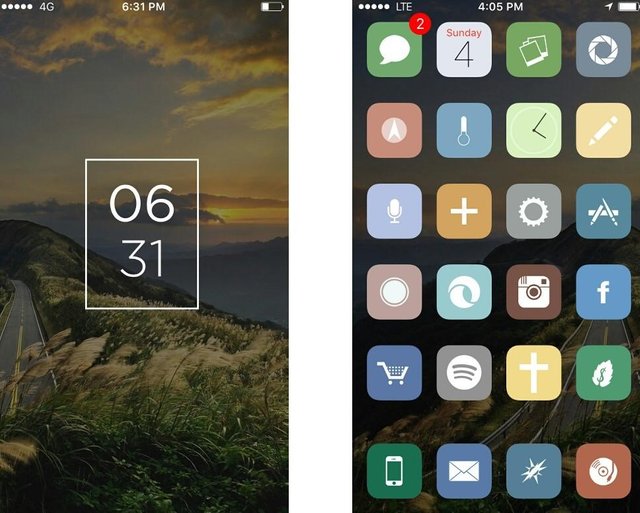Tips & Tutorials: Creative How to Transition from Graphic Design to UX Design
Just a few short years ago, the word “designer” usually meant one thing: Graphic design.
But as websites and apps became the way that people discover trending news, connect with friends, and even monitor their health, it’s no longer enough to have “flat” design, slick logos, and beautiful websites. Today’s most in-demand designers don’t just create sites that look good — they make things that work, and work well.
UX designers make strategic, site-wide decisions that affect the way a business or brand operates. Tweet
The importance of good UX design continues to permeate and transform the industry, changing job descriptions along with it. Learn the differences between graphic designers and UX designers, and see how you can apply your skills to transition into user-experience design.
The difference between graphic design and UX design
The one key difference between graphic design and UX design is “the ability to translate user’s needs into tangible solutions,” according to Claire Lorman, UX designer at Frog Design. “While graphic design does take into account what the user wants, UX design really drills down on what the the user needs, and how to translate that into more product-based solutions.”
Online job-skills training site General Assembly’s UX design course page acknowledges that some crossover exists between graphic and UX design, but it, too, emphasizes this distinction: “While user experience design is also concerned with the appearance of the site, it’s how users interact with the site — navigating through and making decisions on where to click (and where not to click) — that most strongly occupies a UX designer.”
Basically, if a site looks great, but it’s tough to use, that’s good graphic design but bad UX. If it works well, but looks terrible, it’s great UX and bad graphic design. It’s all about the end result; graphic designers create appeal, while UX designers engineer outcomes. 
It’s all about the end result; graphic designers create appeal, while UX designers engineer outcomes.
“Graphic designers all have something in common: They’re able to quickly visualize a solution to a problem, and they’re able to evoke emotion through what they design,” argues Lorman. “Having that [graphic design] knowledge base is key to seamlessly translating features like wireframes into finished screens and processes.”
But a good eye isn’t enough. UX designers make strategic, site-wide decisions that affect the way a business or brand operates. “Along those lines, being able to think quickly and iteratively (as well as take feedback) will serve any designer well when they are looking to transition into another design field,” Lorman continues.
Is transitioning to UX design the right career move?
The differences between graphic and UX design are clear, but the question remains: Should you upgrade your skill set and become a UX designer? The truth is, you may already be on your way.
“Graphic and UX design are the same now, because the way we interface with our tech is tightly intertwined with how it looks and feels,” says Robbie Klein, a digital minimalist and founder of digital-consulting firm Astro Lab. “Some people use Dropbox over Google Drive just because it looks less scary,” Klein continues. “Others use Apple Mail instead of Outlook because it feels more accessible. Color schemes, iconography, menus — these all need to be taken into account by developers.”
Klein, a former Apple employee and graphic designer, recounts his inevitable slide into UX design as a result of the demand for his simple and accessible design aesthetic. “It all started for me when I became obsessed with designing a more aesthetically pleasing version of the iOS interface that everyone uses on a daily basis,” he says. 
“I got my experience in the jailbreak community [modifying devices to customize and install restricted programs] by redesigning icons, menus, and interfaces in a way that technology would no longer feel frightening, but instead a welcoming and calming part of our lives.” The response from clients was immediate, eventually leading Klein to leave Apple and start his own personal tech-consulting company.
Lorman echoes how good UX simply improves people’s relationship with everything. “UX designers gets the chance to design an enormous range of tangible and interactive solutions and services for users to find out what they want out of a product or service through just the click of a button or the swipe of a finger,” she says. “That’s just not always the case as a graphic designer.”
While a more challenging and rewarding career is a great reason to switch from graphic design to UX, the best reason to transition to UX is simple: To keep pace with the shifting job market.
How to make the transition to UX design
Making the leap to UX is easier than you think — you just need a few connections. Lorman stresses the importance of building your UX network from existing graphic design friends and contacts, as well as local meetups and conferences.
“Surround yourself with experts in the field, whether that’s emailing a UX designer you know or setting up interviews with people you’d like to work with. Attending design conferences is a great way to get your foot in the door,” she says. “Organizations like Interaction Design Association (IxDA) host events around different cities aimed at design professionals. By aligning yourself with experts in the field, you start to grow your network and become more knowledgeable about the industry.” 
Whether you need to go to school to learn UX design is a matter of personal preference. Lorman, a graduate of the Savannah College of Art and Design, took the traditional route to UX design, but she encourages professional development and notes the relevance of continuing education. Klein meanwhile, took the self-taught path to UX, learning everything he needed with “a bootlegged version of Photoshop and a couple of Reddit forums.”
However you get the experience, there’s no substitute for actual UX work, even if you just create your own projects. Lorman suggests taking old projects you’ve done and re-imagining them through a UX lens, or simply tackle new problems you’d like to solve to get more UX-based projects in your portfolio. Don’t forget that you’re a user, too. Fix problems as you encounter them to build a professional design resumé that extends beyond aesthetics.
The future of UX design
When it comes to the future of UX design, Lorman acknowledges that the only constant is change.
“As designers, we’re sometimes forced to become hybrids and learn skills we never thought we’d have to. Even the tools we use to design will change in the future. We have access to more technology than we’ve ever had — it’s becoming the norm to design in VR or use innovative technologies in our day-to-day — and [designers] are going to have to adapt to the needs of the customers using our products,” she says. “After all, the person using it really makes or breaks it.”
Hi almuzammil,
Im starting new FB group for designers and architects on Steemit to post their articles and support each other.
https://www.facebook.com/groups/SteemitDesigners/
thank mr andrejcibik, good deals
Lets build design community here! :) There alredy is a ncie Art community, but design isnt just art.
Join us :) We are growing nicely.
okee, i join
Great read! I've struggled with what to call myself for years and I finally just settled on digital business consultant. A big part of what I do is UX design though.
thank, i hope help you @steveo
Excellent post, please vote for this comment, you would help me a lot, thanks
thank,Hopefully we can help each other